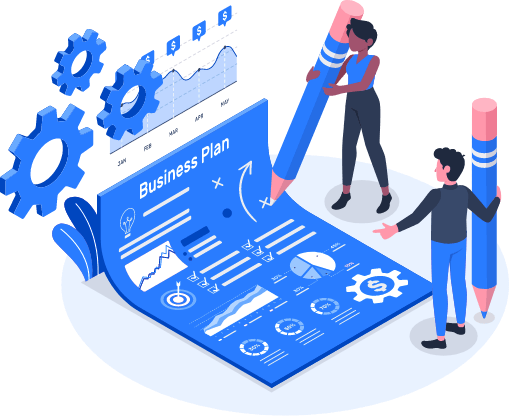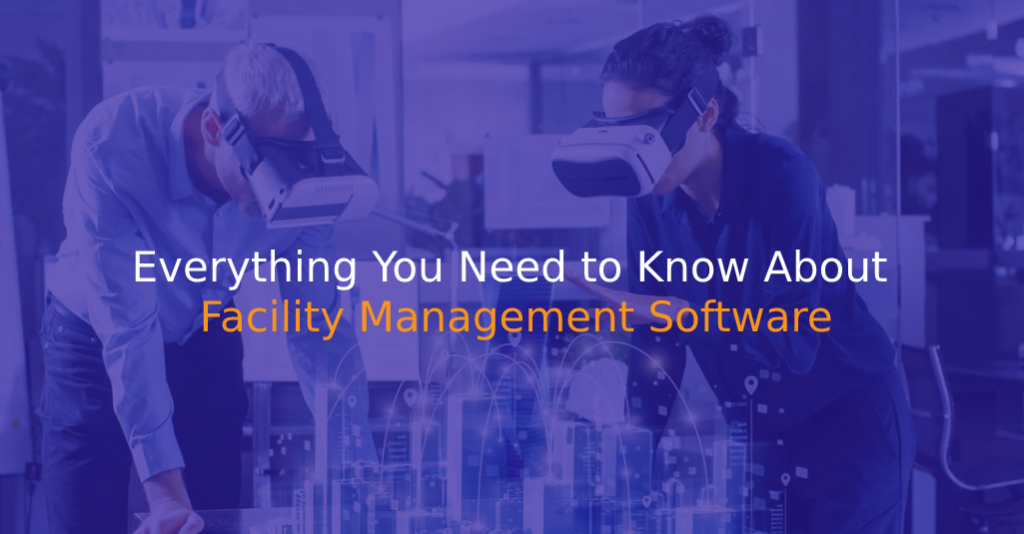In today’s increasingly complicated work environment, facilities managers play an increasingly important role in ensuring that companies have access to the tools and services they require to perform effectively. The fact is that facility managers’ plates are constantly full—whether it’s organizing building cleaning and maintenance, introducing socially separated workplaces, or handling meeting room reservations, a facility manager spends their day ensuring company continuity.
One of the greatest methods for these trained individuals to automate everyday activities, manage a workspace, facilitate communications, equipment monitoring, payments, budget, and other essential information is through facility management software.
What is Facility Management?
The purpose of facility management is to improve and maximize the functionality of physical environments via the integration of people, places, processes, and technology.
IFMA performed a 62-country work task study to evaluate the core competencies associated with the facility management profession, and 11 key competencies were consistently indicated as being critical to the daily execution of facility management duties in the survey, including:
- Communication
- Emergency Preparedness and Business Continuity
- Environmental Stewardship and Sustainability
- Finance and Business
- Human Factors
- Leadership and Strategy
- Operations and Maintenance
- Project Management
- Quality
- Real Estate and Property Management
- Technology
The IFMA was able to leverage the findings of this ground-breaking study to develop instructional and test materials that authentically represent the transdisciplinary skills and knowledge required for efficient facility management.
Key Role of Facility Management
Here are some actions that fall within the purview of facility management:
- General Building Upkeep and Maintenance Contracting and offering cleaning service during building off-hours
- Assuring that consumables are in stock and replaced on time throughout the plant.
- Assuring that processes and contractors are in place to maintain the overall environment waste-free.
- If the facility provides food or a cafeteria, ensure that a catering contract is in place.
- Managing the reactive reaction to any building maintenance concerns.
Looking for an effective facility management software development company in Chennai?
Managing Building Access & Security
Regulate access to the facility, such as restricting admission to authorized staff. This may include:
- Using a security service to control access to the building.
- Creating and maintaining a system for limiting access, as well as administering the system so that only authorized individuals have access to the facility.
- Providing parking in and around the venue.

Space Allocation & Changes
- Providing appropriate room for all employees in the building or workplace.
- Ensure that the building's layout complies with fire safety rules.
- Ensure that all signage in the institution is appropriate for directing residents, staff, and visitors to the right resources.
- Maintaining temperature management in the building and ensuring that infrastructure such as server rooms are kept at the proper temperature.
- Assuring that ventilation systems are properly working and that the interior air quality does not pose a safety risk to building inhabitants or workers.
Equipment Maintenance
Facility managers can also handle the building’s IT resources and equipment. If a photocopier, computer, or other pieces of equipment has to be fixed or replaced, it is the responsibility of the facilities managers to replace the item as soon as possible to prevent business interruptions.
Looking for an effective facility management software development company in Chennai?
What Are the Best Practices for Facilities Management?
Facility managers may engage with and use industry-leading approaches to maximize efficiency across the company. Here are some of the most recent best practices in facility management:

Effective Space Management
Effective space management inside a facility may help an organization save money on real estate, limit walking steps, enhance productivity, make more income, lower electricity costs, and boost staff retention—that lot of benefits for just a tiny aspect of a facility manager’s responsibility.
Follow ISO 41011:2018
The International Standards Organization issued ISO 41001:2018 in 2018 to outline worldwide standards and best practices for facility management systems.
Organizations that need to show successful and efficient delivery of facility management services that satisfy customer requests should embrace this standard, and all facility management professionals should be familiar with it at the very least.
Prioritize Preventive Maintenance
Another recommended practice whose advantages are almost too many to list is preventive maintenance. Organizations that carefully plan and carry out preventative maintenance save money by preventing big and unexpected expenses, enhancing staff retention and job satisfaction, and reducing business interruptions.
The use of facility management software to schedule, manage, and track routine maintenance expenses and their budgetary implications is an emerging best practice.
Creating the best facility maintenance software meeting specific needs!
Streamline Customer Communications
Some facility managers continue to communicate with customers via email and phone conversations, but this practice is gradually being supplanted by facility management software that provides a single platform for communication between facility managers and the demand organization.
Facility management software automates simple to moderately complicated facility management duties so that consumers may service themselves, and it keeps accurate records of interactions between facility management employees and clients.
What Are the Benefits of Facility Management Software?
By utilizing specialist facility management software to assist them in staying organized, automating repeating chores, and streamlining many of the mundane operations connected with building management.
Some of the primary functions of facility management software are as follows:
User Portals that Enable Facility Managers and Building Tenants to Communicate
User portals simplify interactions by offering a centralized platform for users to start work orders and efficiently connect with facility managers, who can now see all of their pending work orders and requests in one handy dashboard.
This feature is notably useful for controlling building access—users can request key cards, security clearances, parking, special after-hours access, and other services, all of which can be handled and automated through the program.

Project Management That Manages Resources
Project management is a component of facility management software that allows users to coordinate projects with various stakeholders graphically and easily.
Facility managers design and track project deliverables, manage communication among project stakeholders, assign duties, keep meeting minutes, and track project budgets.
A project management software system is the best approach to ensure that budgeting and spending records for building management projects are properly tracked.
Facility management software may be used to offer real-time information on how space is being utilized at the facility, along with the number of workers using the area, what business assets are there in the work environment, and how the space is structured.
Asset Management That Ensures Optimal Resource Allocation
Asset management is an important aspect of any facility manager’s work. Organizational assets must be managed and accounted for, and facilities managers must be aware of their position, who is using them, who requires them, and how frequently they are utilized.
Facility management software provides a user-friendly dashboard from which the facility manager can monitor the maintenance and usage status of any equipment owned by the business, ensuring that equipment is distributed where it is required throughout the organization.
How Can I Get Started with Facility Management Software?
If your firm is still using email and spreadsheets to keep key asset data, work orders, and requests, it may be time to switch to property management software that may streamline your operations, add automation for common activities, and increase organizational efficiency.
Maintaining a centralized dashboard for all aspects of facility management ensures that a comprehensive record of projects and structured work orders is kept.
Modern Organizations Need Facility Management Software
The greatest method to optimize the influence of facility managers in your firm is to use facility management software. User portals provide direct contact between facility managers and other members of your company, ensuring that work orders and requests are handled on time and your business is kept running.
You’ll also be able to effortlessly automate regular operations like cleaning and maintenance, better manage physical assets, and retain secure records of payments, invoicing, and budgets. This is vital not just for overall operations optimization, but also for a more seamless return to work.



